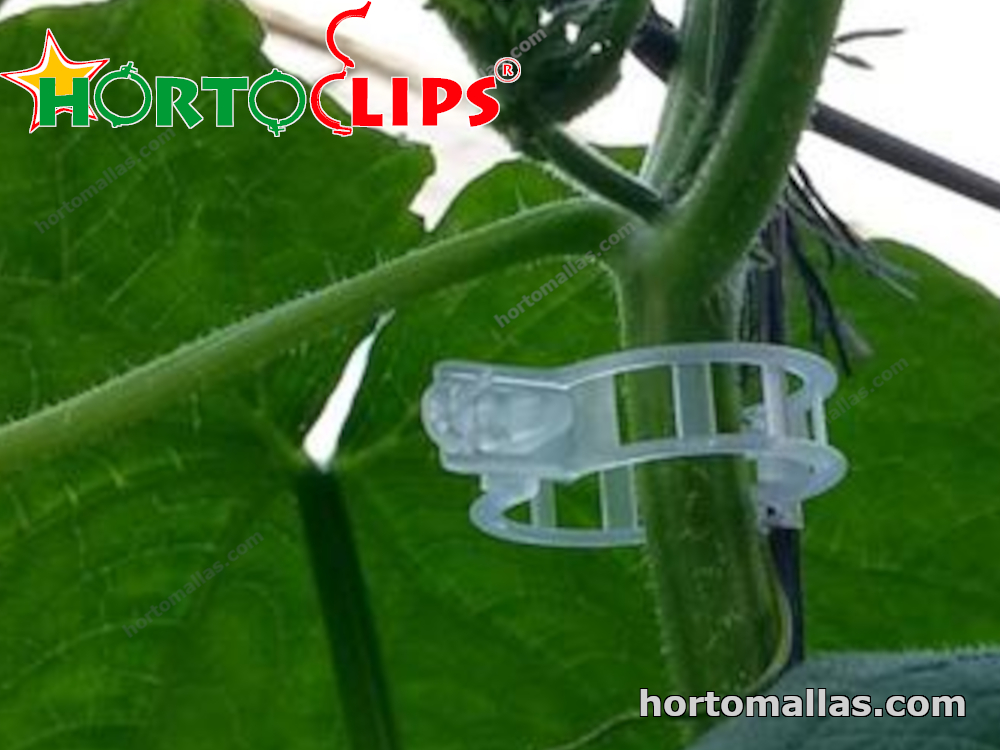Advantages of Using Tomato Clips
Tomatoes pose exceptional challenge to farmer and gardeners. Indeterminate tomato varieties can grow to towering heights, which results in difficulties of supporting themselves, particularly when they start setting fruit. All tomato varieties gain many benefits from sufficient and strong support. Crops can dry out faster, leading to even and more thorough ripening, less rot and faster and easier harvesting procedure. There are effective and popular methods of tomato plant supports. These include, overhead string trellising, Florida Weave and using freestanding structure; with additional features like clips and systems for insect barrier. Tomato clips are designed to provide support for crops and to prevent collapse during vertical growing. In plant training using trellises, use of clips are recommended because they offer an effective means of preventing slippage and minimizing friction damage. The best way to go is snapping the clips tightly on heavy line and then closing it around the plant stem for guidance and efficient vertical support.
Overhead String Trellising with Tomato Clips
Trellis technique with overhead string for support is one of the most commonly preferred systems by gardeners. As a particularly efficient space usage, this gardening method is perfect for tomato production. It is also usable indoors or outdoors. With trellis overhead support, the tomato plants are provided one string each; running from the ground/floor to the ceiling, wherein the plants can climb. Having a strong and durable support system is important. The options include rafters, hoops and A-frame structures. It is important to ensure that all structure have the ability to take heavy loads prior to setting the strings.
Start by tying one string for every vine. This should be done directly overhead, ensuring that the string is long enough so that it can reach the floor/ground. Next, you need to tie your string securely to the vine’s base and making sure that the line is taut, but the loop is not quite. Tomato clips are to be attached to the vines directly under the major branches.
Hanging-string trellising method is commonly used in hoop house. Running wires or pipes above the plants is the most common way to go, as this makes it easier to attach the overhead strings. This technique disregards the necessity pounding posts inside the hoop house. In addition, it allows for taller trellises during longer hoop house seasons.
Another overhead string method variation for hoop house or greenhouse tomato growing is using roller hooks or toma-hooks for attaching the hanging strings. These features are strong and they conveniently allow for easy leaning and lowering of vines, as they can outgrow their greenhouse vertical space. With this technique, the overhead wire is attached with a spool, and in cases that the tomato plants start running out of space to grow, playing out some stringing (one foot in length at a time) is an option.
Setting up Netting Trellis
Tomato clips are also used when setting up netting trellises. The first step in the method is similar to the overhead string trellising technique. Once the tomato plants are growing up, trellis clips can be used to attach the vines to the netting.
Using this method is ideal for letting cherry tomatoes in developing more heads as the mesh are allowed to accommodate several heads. This is also an ideal method for growing other crops like roses, peas and beans.
Benefits of Trellising Clips
One of the best benefits of using tomato trellising clips is that they can be reused many times over. Other benefits include:
- They are easy to clip to trellising netting and twine
- They do not slip
- Perfect for other fruit and vegetable crops like melons, pepper, cucumbers and flowery vines
- They come in ventilated design for perfect air circulation
- They are designed to help in reducing fungal disease in the crops
- They feature easy release designs that allow them to be easily moved and effectively reused
Use of trellis clips allows for a very convenient way of providing support for your tomato plants. They let you save labor and time as compared to other trellising techniques and features (clips are easy-to-close that you can snapped shut using one hand). The quick-release features allow you to easily move the clips or to save them for another season (with minimal damage to the tomato stems and minimal effort on your part).
Tomato clips are designed to be used for effective training of vines to grow up on trellises or strings. They are easy to use as they easily and quickly clip either on or off. They are also ideally perfect in providing support for the plant weight once they are starting to reach their mature sizes.
Trellis clips provide support for plants and they allow for quick access to fruits and leaves for pruning and harvesting. These clips also allow for better air circulation, as well as provide help in reducing diseases that are commonly caused by reduced air flow and moisture. In addition, you can easily inspect your crops when trellis clips are effectively separating branches and vines. The easy-to-open trellis clips also provide for unlimited adjustments that are essential for pollination.
Whether you are growing your tomatoes in the field, your patio, backyard, hoophouse, warehouse, greenhouse, glasshouse or high tunnel, it is important that you give importance to the support you provide. There are several trellising techniques and features that are available for you to try. Most systems are customizable to suit different gardening techniques, personal preferences and conditions.
When you provide your vining crops – like tomatoes -with appropriate support and trellising, your growing labours are going to be more efficient. At the same time, you are going to be able to deliver optimal premium fruit yields with healthy and fresher flavor.
Keep in mind that even though use of tomato clips is considered as optional, you should not ignore their importance and the benefits they can provide – both for you and your tomato plants.
